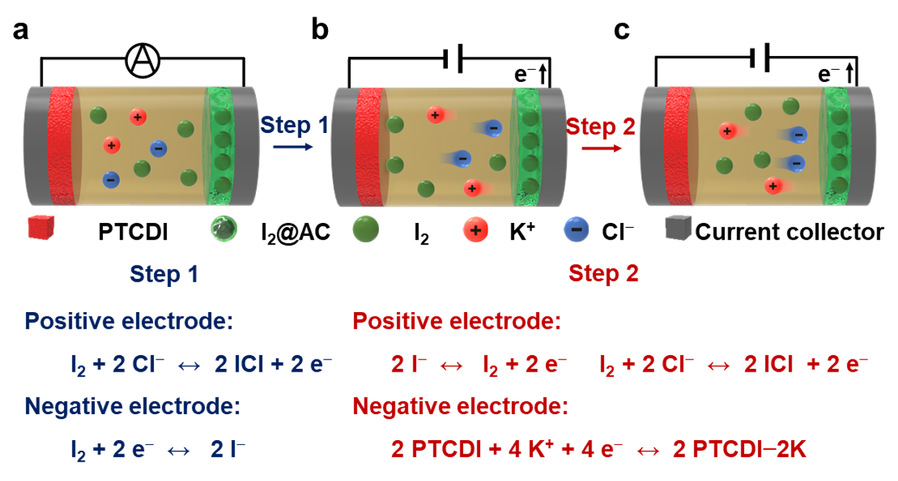Harbin Institute of Technology (China) Professor Yu Miao’s team from the School of Chemical Engineering and Chemistry has made important progress in the research of water-based iodine batteries

Harbin Institute of Technology Media (Zhang Zishuai text/picture) Recently, the team of Professor Yu Miao from the School of Chemical Engineering and Chemistry of our school and the team of Professor Huang Yan from the Shenzhen Campus have made important progress in the research of water-based iodine batteries. The breakthrough of iodine secondary battery” (Development of long lifespan high-energy aqueous organic||iodine rechargeable batteries) was published in “Nature Communications” (Nature Communications). The team first proposed the concept of a water-based iodine cathode tandem battery. By using organic electrode materials as the negative electrode of the battery, a water-based iodine cathode tandem battery was constructed in a saturated potassium chloride/iodine mixed solution. Provides an effective solution to the problem.
In recent years, rechargeable metal||halogen batteries with high energy density and high power density based on redox chemical reaction mechanism have attracted much attention. Due to its advantages of abundant reserves, high theoretical capacity, and high theoretical redox potential, iodine has become a promising cathode material for aqueous batteries. In addition, the I−/I0/I+ solid/liquid conversion reaction of iodine cathode also avoids the common electrode structure degradation problem in other intercalation/extraction mechanism materials. However, the dendrite growth and corrosion of the metal negative electrode will lead to rapid decay and short circuit of the battery capacity; the non-electrochemically active products formed by the iodine anion and the metal negative electrode will also lead to an increase in the irreversible degree of the iodine positive electrode and a shortened cycle life, resulting in a similar lithium ion. / Shuttle effect in sulfur battery systems.
The team proposed for the first time the concept of an aqueous organic negative electrode||iodine tandem battery (as shown in the figure), using perylene tetracarbonyl diimide (PTCDI) as the negative electrode active material, and a saturated potassium chloride and iodine mixed solution as the electrolyte. The use of these components enables two reversible electrochemical reactions to occur sequentially in one electrochemical energy storage device. When a full battery is assembled with activated carbon-coated iodine as the positive electrode material, the battery system can obtain an initial discharge capacity of 900 mAh/g (based on the iodine in the electrode material) and a current density of 40 A/g. Average discharge voltage of 1.25 volts. In addition, the paper also reported the assembly and testing of an aqueous cathode-free iodine-based pouch battery, which maintained about 70% of its discharge capacity after 900 cycles at a current of 80 mA. This study solves the main problems faced by aqueous iodine cathode batteries, enriches the research scope of aqueous halogen batteries, and provides new research ideas for the construction of high-performance battery systems based on sulfur electrodes.
Zhang Zishuai, a doctoral student in the School of Chemical Engineering and Chemistry of our school, is the first author of the paper. Zhu Yilong, a doctoral student at the School of Chemical Engineering and Advanced Materials at the University of Adelaide, is the second author of the paper. Professor Yu Miao, Professor Jiao Yan and Professor Huang Yan from the University of Adelaide are the co-corresponding authors.
